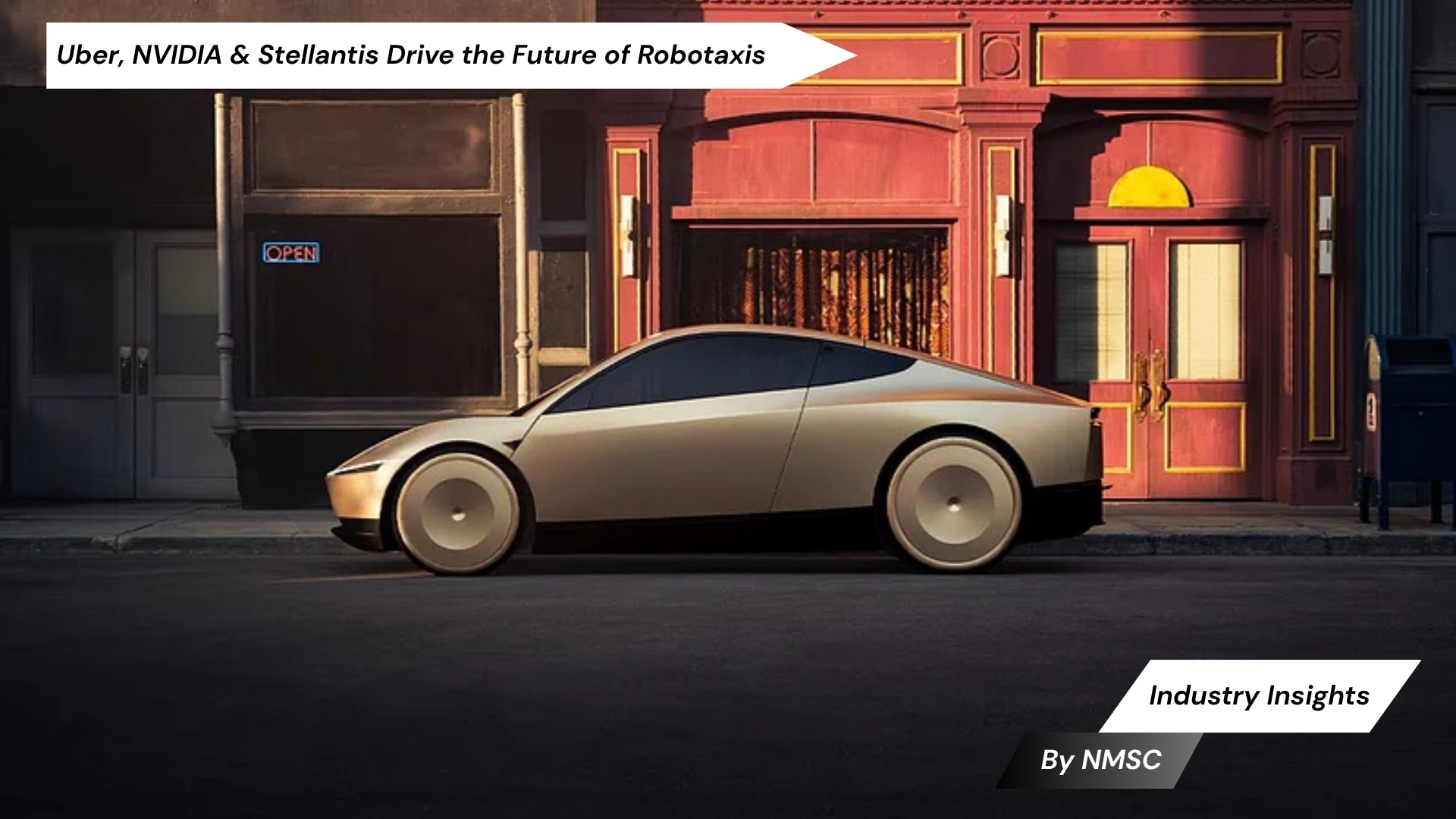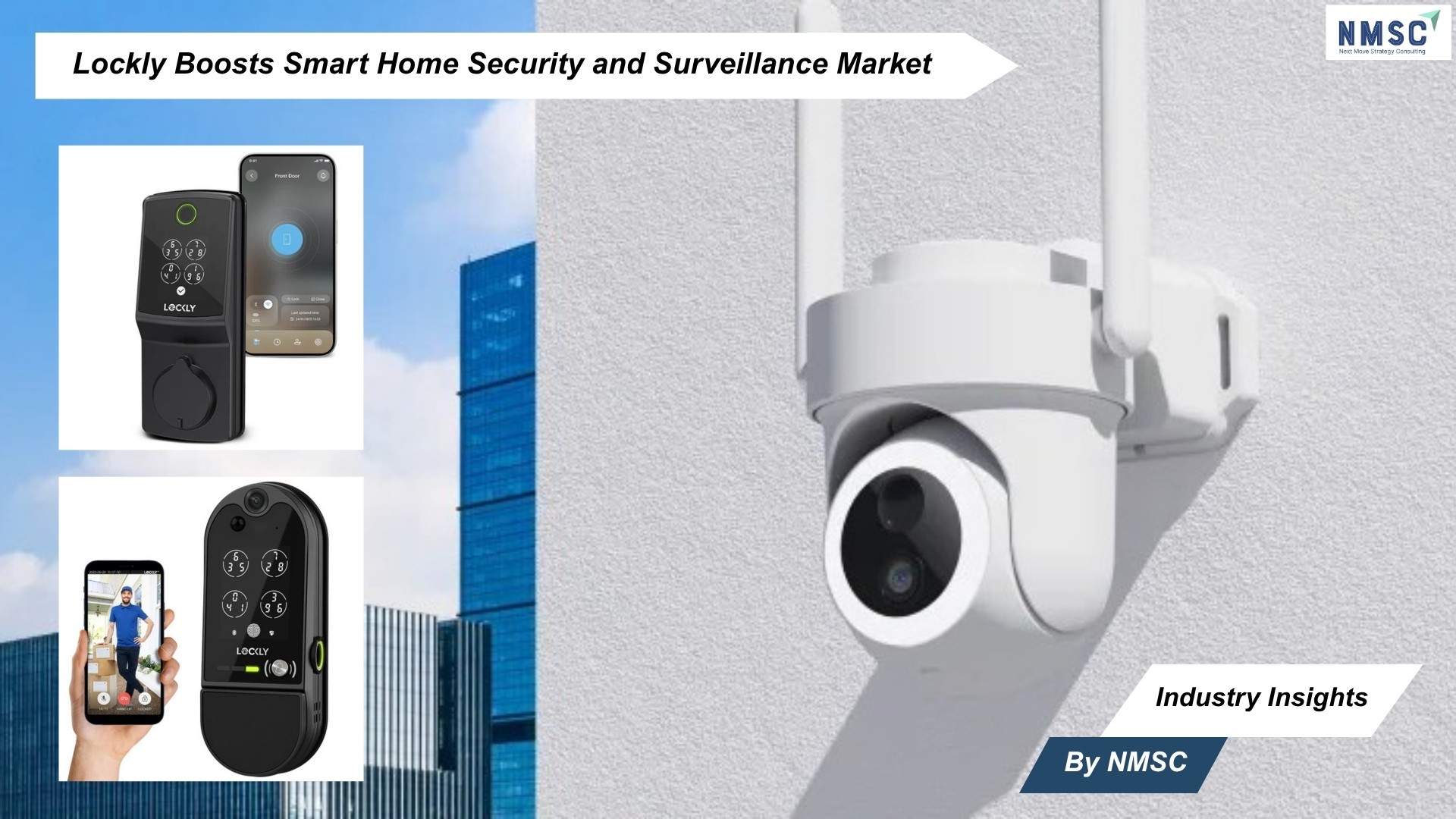Uber, NVIDIA & Stellantis Drive the Future of Robotaxis
Published: 2025-11-01

Industry Insights from Next Move Strategy Consulting
As the race toward autonomous mobility intensifies, Uber Technologies, NVIDIA, and Stellantis have joined forces to propel the next generation of robotaxis and self-driving delivery fleets. This strategic collaboration aims to redefine urban transportation through advanced artificial intelligence (AI), large-scale data integration, and Level 4 (L4) autonomous driving systems.
Driving the Next Phase of Autonomous Mobility
Uber has long been invested in the vision of robotaxis — vehicles that operate autonomously to transport passengers and goods without human intervention. This latest alliance marks a significant advancement in that pursuit. Leveraging NVIDIA’s AI architecture and Stellantis’ automotive manufacturing expertise, Uber plans to develop up to 5,000 fully self-driving vehicles, though no timeline has been specified.
According to Uber, the partnership will accelerate its global rollout of autonomous fleets. These vehicles will be powered by NVIDIA DRIVE AGX Hyperion, a platform purpose-built for L4 autonomy, running on the safety-certified NVIDIA DriveOS operating system and integrated DRIVE AV software stack. Together, these components aim to deliver high safety, precision, and adaptability across complex driving scenarios.
Harnessing AI to Fuel Autonomous Fleets
“NVIDIA is the backbone of the AI era, and is now fully harnessing that innovation to unleash L4 autonomy at enormous scale, while making it easier for NVIDIA-empowered AVs to be deployed on Uber,” said Dara Khosrowshahi, CEO of Uber. He further emphasized that autonomous mobility will transform cities for the better — improving traffic efficiency, reducing emissions, and redefining transportation accessibility.
To strengthen these ambitions, NVIDIA and Uber are also co-developing a robotaxi data factory, powered by the NVIDIA Cosmos platform for physical AI. This initiative aims to collect and process over 3 million hours of robotaxi-specific driving data. The data will be used for model training, validation, and continuous improvement of the AI driving stack.
This vast data engine will include ingestion, labeling, scenario mining, synthetic data generation, and large-scale model training — all designed to shorten the timeline from pilot testing to profitable deployment.
Collaboration Across the Autonomous Ecosystem
The partnership also extends to a wide network of autonomous technology companies, including Aurora, Avride, May Mobility, Momenta, Motional, Nuro, Pony.ai, Waabi, Wayve, and WeRide. These collaborations demonstrate a broader industry trend toward shared innovation and collective progress within the autonomous vehicle ecosystem.
Each partner contributes expertise in areas such as perception systems, mobility-as-a-service (MaaS), AI simulation, and vehicle safety — strengthening the foundation for scalable robotaxi operations. Meanwhile, global players like Waymo, Baidu’s Apollo Go, Tesla, Amazon’s Zoox, and others are competing fiercely to commercialize self-driving solutions. The resulting momentum underscores that the robotaxi landscape is becoming increasingly dynamic and data-driven.
The Strategic Edge of Data and AI Integration
Central to this alliance is data-driven optimization. Uber’s extensive mobility network combined with NVIDIA’s AI processing power creates a feedback loop for continuous learning and refinement. Stellantis, known for its manufacturing agility and advanced electric vehicle architecture, adds production scalability — bridging the gap between AI innovation and real-world deployment.
This tripartite synergy positions the partnership as a potential catalyst for large-scale, commercially viable robotaxi operations. By leveraging simulation, physical AI, and deep learning, the group aims to transition from conceptual trials to full-scale autonomous mobility networks that can operate safely and efficiently in diverse environments.
Industry Outlook: Next Move Strategy Consulting View
According to Next Move Strategy Consulting, the Uber–NVIDIA–Stellantis collaboration exemplifies a pivotal shift within the global Robotaxi Market. The convergence of AI, big data, and automotive innovation represents not just technological evolution, but a reconfiguration of the transportation industry’s business models.
The robotaxi market is rapidly emerging as a cornerstone of smart mobility ecosystems. Strategic partnerships like this one highlight a movement toward ecosystem-based innovation, where data sharing, simulation accuracy, and AI optimization determine competitive advantage.
Next Move Strategy Consulting identifies three key drivers behind this transformation:
-
AI-Powered Decision-Making: Integration of advanced neural networks enables real-time perception, predictive control, and dynamic navigation.
-
Scalable Fleet Deployment: Collaborations between mobility providers and AI firms accelerate mass production and real-world testing.
-
Ecosystem Interoperability: Partnerships promote shared data frameworks, ensuring seamless cross-platform operation between robotaxi and logistics networks.
As the autonomous mobility race heats up, companies with access to large-scale datasets and advanced simulation platforms — like Uber and NVIDIA — are positioned to lead. However, the competitive field remains open, with numerous innovators pursuing unique pathways to commercial deployment.
Paving the Road to Autonomous Future
The alliance between Uber, NVIDIA, and Stellantis signals a defining moment for the future of autonomous transportation. By merging AI innovation, automotive excellence, and global ride-hailing expertise, the trio is laying the groundwork for a safer, smarter, and more sustainable urban mobility era.
In a rapidly evolving sector where data is the new fuel, their combined efforts could very well set new benchmarks for scalability, safety, and efficiency in robotaxi operations — propelling the industry closer to realizing the long-promised dream of autonomous urban transport.
Source: CleanTechnica
Prepared by: Next Move Strategy Consulting
About the Author
 Tania Dey is a highly experienced Content Writer and a passionate SEO Executive with a specialized focus on digital transformation, technology trends, and industry-focused insights. She has honed her expertise in creating compelling, data-driven content that not only enhances online visibility but also aligns with the ever-evolving demands of modern business landscapes. Her work spans a diverse range of industries, including technology, and digital services, enabling organizations to communicate their vision and value propositions effectively to both niches.
Tania Dey is a highly experienced Content Writer and a passionate SEO Executive with a specialized focus on digital transformation, technology trends, and industry-focused insights. She has honed her expertise in creating compelling, data-driven content that not only enhances online visibility but also aligns with the ever-evolving demands of modern business landscapes. Her work spans a diverse range of industries, including technology, and digital services, enabling organizations to communicate their vision and value propositions effectively to both niches.
About the Reviewer
 Debashree Dey is a versatile Content Writer, PR Specialist, and Assistant Manager in Digital Marketing, known for her ability to craft audience-focused narratives and develop data-driven strategies that enhance brand visibility. As a published manuscript author, she combines creativity
with strategic acumen to help brands strengthen their presence and drive deeper user engagement. Outside of her professional pursuits, Debashree draws inspiration from creative projects and design explorations.
Debashree Dey is a versatile Content Writer, PR Specialist, and Assistant Manager in Digital Marketing, known for her ability to craft audience-focused narratives and develop data-driven strategies that enhance brand visibility. As a published manuscript author, she combines creativity
with strategic acumen to help brands strengthen their presence and drive deeper user engagement. Outside of her professional pursuits, Debashree draws inspiration from creative projects and design explorations.















Add Comment